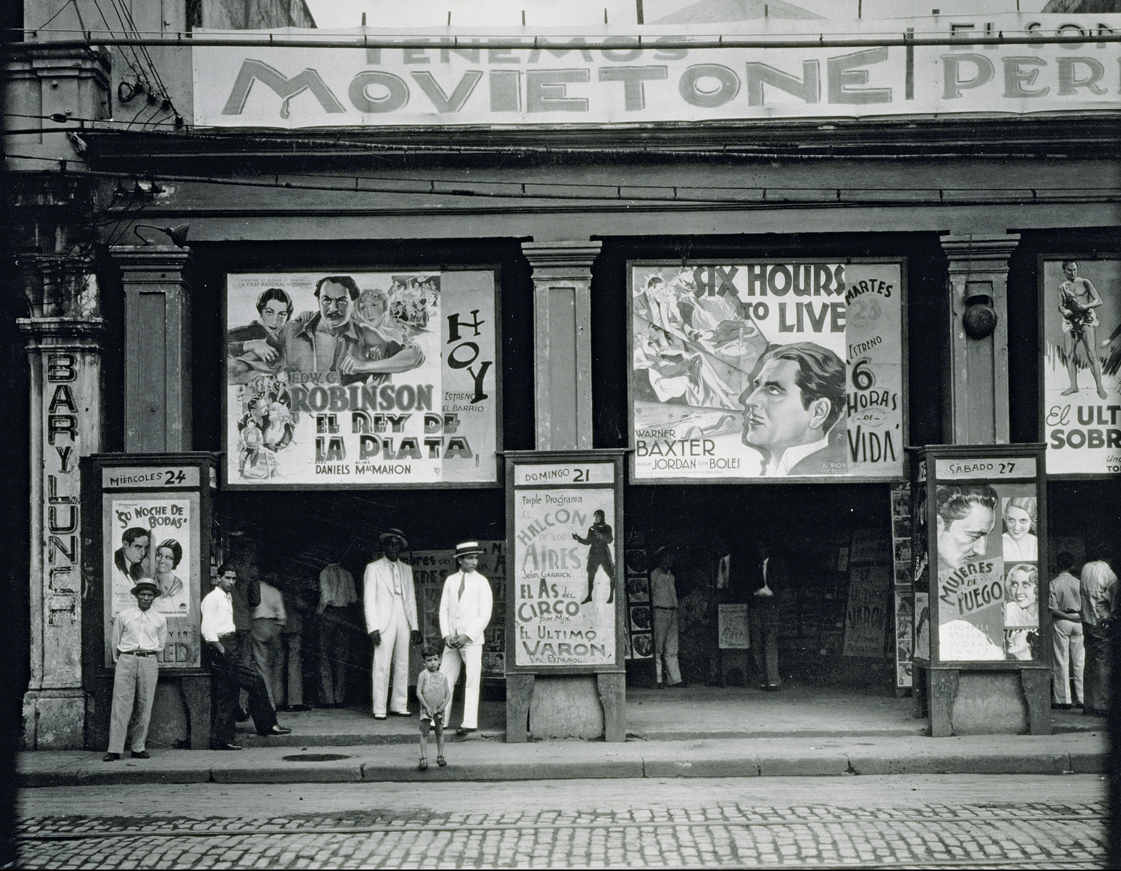A History of World Societies:
Printed Page 879
A History of World Societies Value
Edition: Printed Page 892
Chapter Chronology
Movies and Radio
Cinema and radio became major industries after World War I, and standardized commercial entertainment began to replace the traditional arts and amusements of people in villages and small towns. Moving pictures were first shown as a popular novelty in naughty peep shows and penny arcades in the 1890s, especially in Paris. The first movie houses, dating from an experiment in Los Angeles in 1902, showed short silent action films.
During the First World War the United States became the dominant force in the rapidly expanding silent-film industry, and Charlie Chaplin (1889–1978), an Englishman working in Hollywood, was unquestionably the king of the silver screen. In his enormously popular role as a lonely tramp, complete with baggy trousers, battered derby, and an awkward, shuffling walk, Chaplin symbolized the “gay spirit of laughter in a cruel, crazy world.”15 Chaplin also demonstrated that in the hands of a genius the new medium could combine mass entertainment and artistic accomplishment.

The International Appeal of Cinema A movie house in Havana, Cuba, in 1933 showing two American films made in 1932: El Rey de la Plata (Silver Dollar) starring Edward G. Robinson, and 6 horas de Vida (Six Hours to Live) featuring Warner Baxter. The partially visible poster in the upper right is advertising El último varon sobre la Tierra (The Last Man on Earth), an American-produced Spanish-language movie starring Raul Roulien, first released in Spain in January 1933. (Walker Evans [1903–1975]/© Copyright 1933. Cinema, 1933, printed ca. 1970. Gelatin silver print. Gift of Arnold H. Crane, 1971 [1971.646.12)] © Walker Evans Archive, The Metropolitan Museum of Art, New York, NY, USA/Image copyright © The Metropolitan Museum of Art/Image source: Art Resource, NY)
Motion pictures also became powerful tools of indoctrination, especially in countries with dictatorial regimes. Lenin encouraged the development of Soviet film making, and beginning in the mid-1920s a series of epic films, the most famous of which were directed by Sergei Eisenstein (1898–1948), dramatized the Communist view of Russian history. In Germany Hitler, who rose to power in 1933, turned to a talented woman film maker, Leni Riefenstahl (1902–2003), for a masterpiece of documentary propaganda, Triumph of the Will, based on the 1934 Nazi Party rally at Nuremberg. Her film was a brilliant and all-too-powerful depiction of Germany’s Nazi rebirth (see Chapter 30).
Whether foreign or domestic, motion pictures became the main entertainment of the masses worldwide until after the Second World War. Featuring glittering stars such as Ginger Rogers and Fred Astaire and the fanciful cartoons of Mickey Mouse, motion pictures offered ordinary people a temporary escape from the hard realities of international tensions, uncertainty, unemployment, and personal frustrations.
Radio also dominated popular culture after the war. The work of Guglielmo Marconi (1874–1937) in 1901 and the development of the vacuum tube in 1904 permitted the transmission of speech and music. Only in 1920, however, were the first major public broadcasts made in Great Britain and the United States. Every major country quickly established national broadcasting networks. In the United States these were privately owned and financed by advertising, as was LOR Radio Argentina, which became the first formal radio station in the world when it made its first broadcast in August 1920. In Europe, China, Japan, India, and elsewhere the typical pattern was direct government control. By the late 1930s more than three-fourths of the households in both democratic Great Britain and dictatorial Germany had at least one cheap, mass-produced radio. Radio was well suited for promoting patriotism and spreading political propaganda. Radios were revolutionary in that they were capable of reaching all of a nation’s citizens at once, offering them a single perspective on current events, and teaching them a single national language and pronunciation. Dictators such as Mussolini and Hitler controlled the airwaves and could reach enormous national audiences with their frequent, dramatic speeches. In democratic countries politicians such as President Franklin Roosevelt and Prime Minister Stanley Baldwin effectively used informal “fireside chats” to bolster support.
